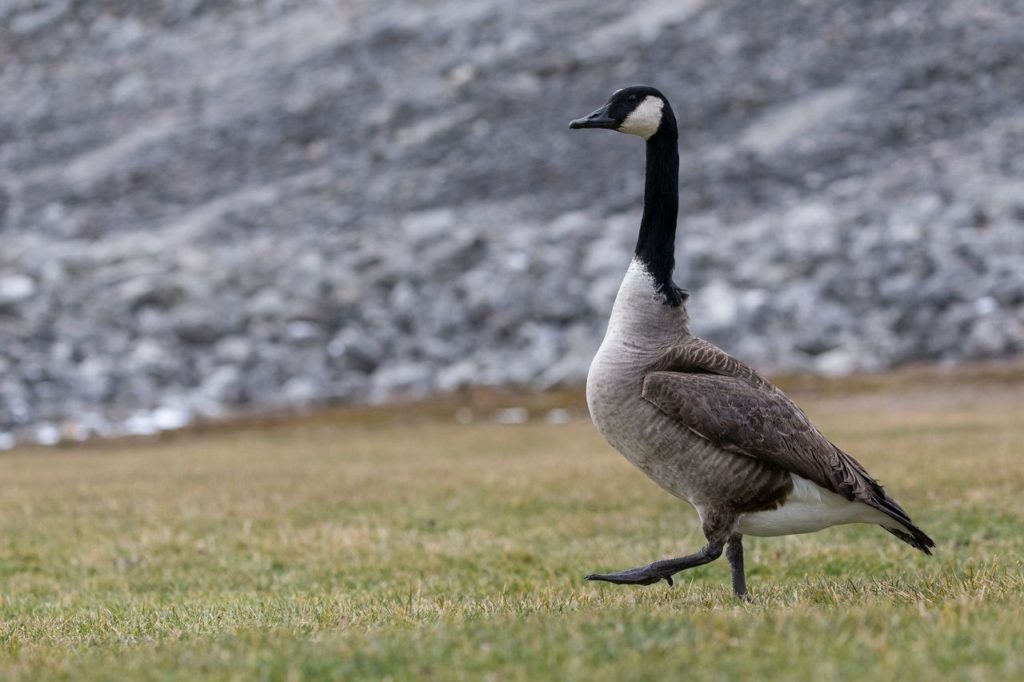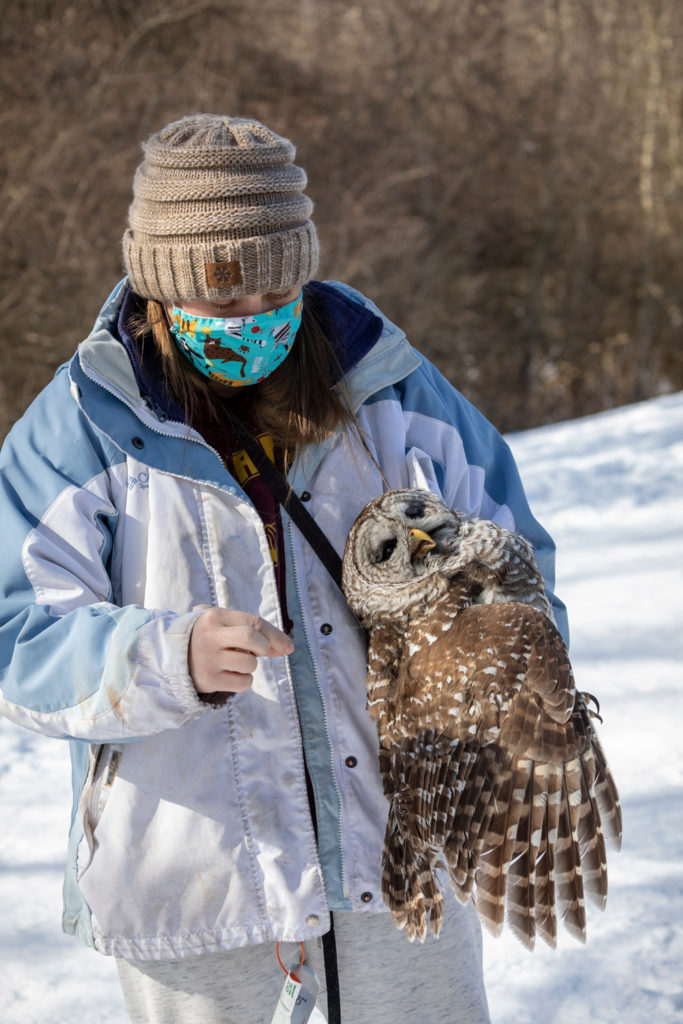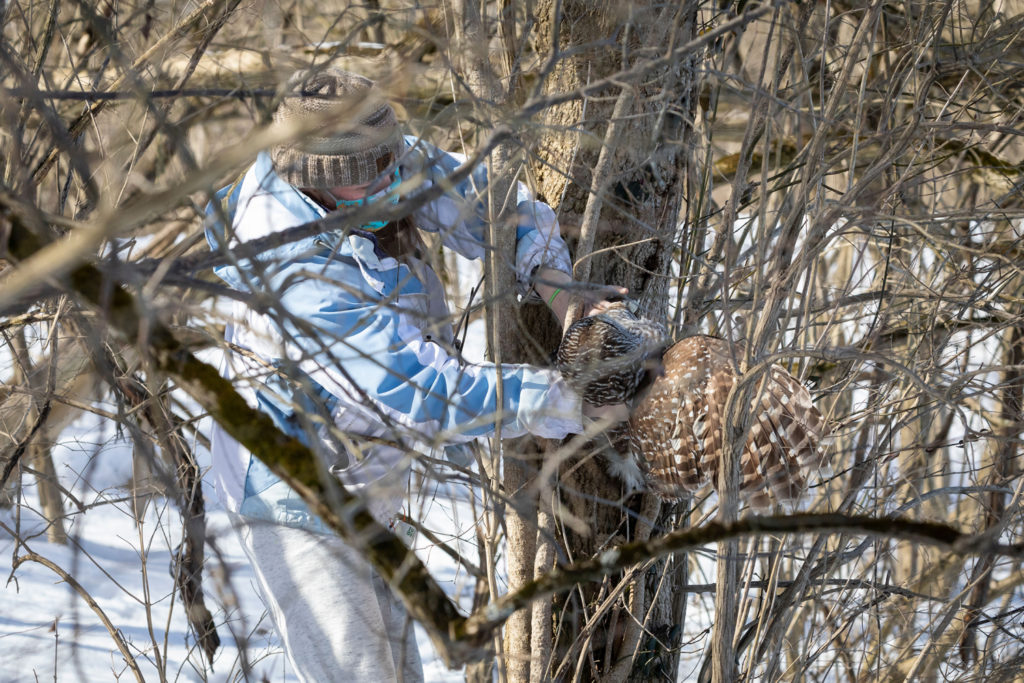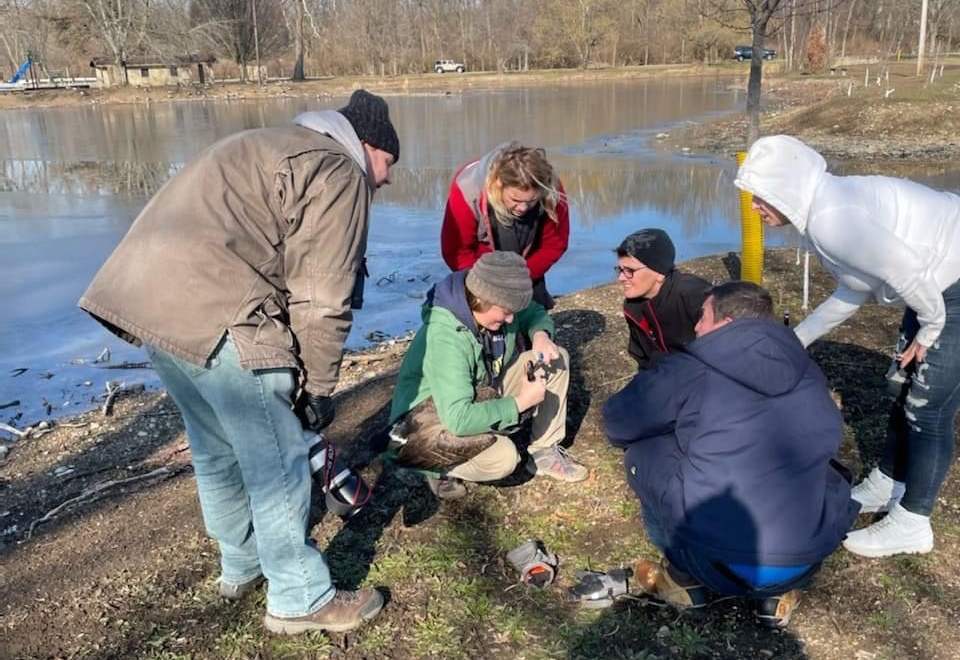Two recent wildlife rescues, one at a pond Springfield, Ohio, and the other at Antrim Park in Columbus, resulted from the dangers animals encounter when litter left around parks entrap them, which can quickly threaten their life.
This winter, a Canada Goose and a Barred Owl both had injuries from discarded fishing line left near ponds that caused them to become trapped and unable to move or fly. Through the efforts of park visitors who acted quickly to try and free the animals, they were ultimately brought to the Wildlife Hospital at Ohio Wildlife Center for professional veterinary care.
Kristi Krumlauf, a veterinary technician at the Wildlife Hospital, had a role in both rescues. While visiting some Ohio parks to bird watch with friends in January, she stopped at Old Reid Park in Springfield, which is a popular park for fishing and feeding ducks and geese. Scanning the pond, she noticed a small group of people huddled around a Canada Goose that was tangled up in fishing line. Krumlauf helped them free the goose and she drove it back to the Wildlife Hospital so its injuries could be assessed. With a fishing hook in its mouth and fishing line wrapped around its wing, the goose needed treatment at the hospital.

The fishing hook had caused a small puncture in the goose’s cheek and it had minor abrasions. After about two weeks of care and observation, the goose recovered and was released at Buck Creek State Park in Springfield on January 22.
“Becoming entangled in fishing line can cause a myriad of injuries for animals,” Krumlauf noted. “This goose and other waterfowl can get completely wrapped up in the lines. This bird had the hook through its beak and the line was so wrapped around its wings it could not move,” she said.
“Hooks in an animal’s mouth can prevent them from being able to eat, which leads to starvation. Sometimes they can be so stressed and worn down from fighting to free themselves that the stress of the struggle can be fatal,” she added. The Wildlife Hospital also treats many turtles and birds that swallow fish hooks and have to have surgery to remove them, as well as animals that severely injure legs and feet when entangled fishing line cuts off circulation that is irreversible.


Barred Owl was caught in fishing line
Krumlauf was contacted just a month after the goose rescue to assist with a Barred Owl that was tangled in discarded fishing line at Antrim Park in north Columbus.
A popular and busy park for walkers, joggers and bicyclists, the owl was discovered hanging upside down by fishing line wrapped around a wing in a small tree by the bike path. Some visitors at the park initially removed enough line so that the owl could right itself on a branch. After some time passed and the owl still hadn’t moved, people reached out to Ohio Wildlife Center for help.
She noted the owl still had fishing line on a wing and appeared exhausted, so it was transported to the Wildlife Hospital for assessment and care. X-rays indicated there were no wing fractures, but it had soreness from the ordeal with the fishing line. It received fluids and nutrition so it could rest and recover. After a short stay at the hospital, the owl was transferred to the Pre-Release Facility raptor enclosure where it could gain strength flying. When it was cleared for release and the winter storms passed, the owl was returned to the area around Antrim Park on February 24.
According to Stormy Gibson, assistant executive director of the Center, it’s important that litter and trash such as used fishing line be recycled or discarded in the proper places so that wild animals don’t suffer from human activities such as fishing and outdoor picnics.
“These animals were rescued in time and had great veterinary care at our Wildlife Hospital to recover and return to their habitats,” she said. “Many others are not so lucky and we will see more of this as the weather returns to warmer days.”
The Wildlife Hospital treated 8,105 patients from 166 species last year, including 2,929 birds from 114 species.
To support wildlife rescues and recoveries, please donate here! Thank you!
Photos courtesy of Chris Brinkman



